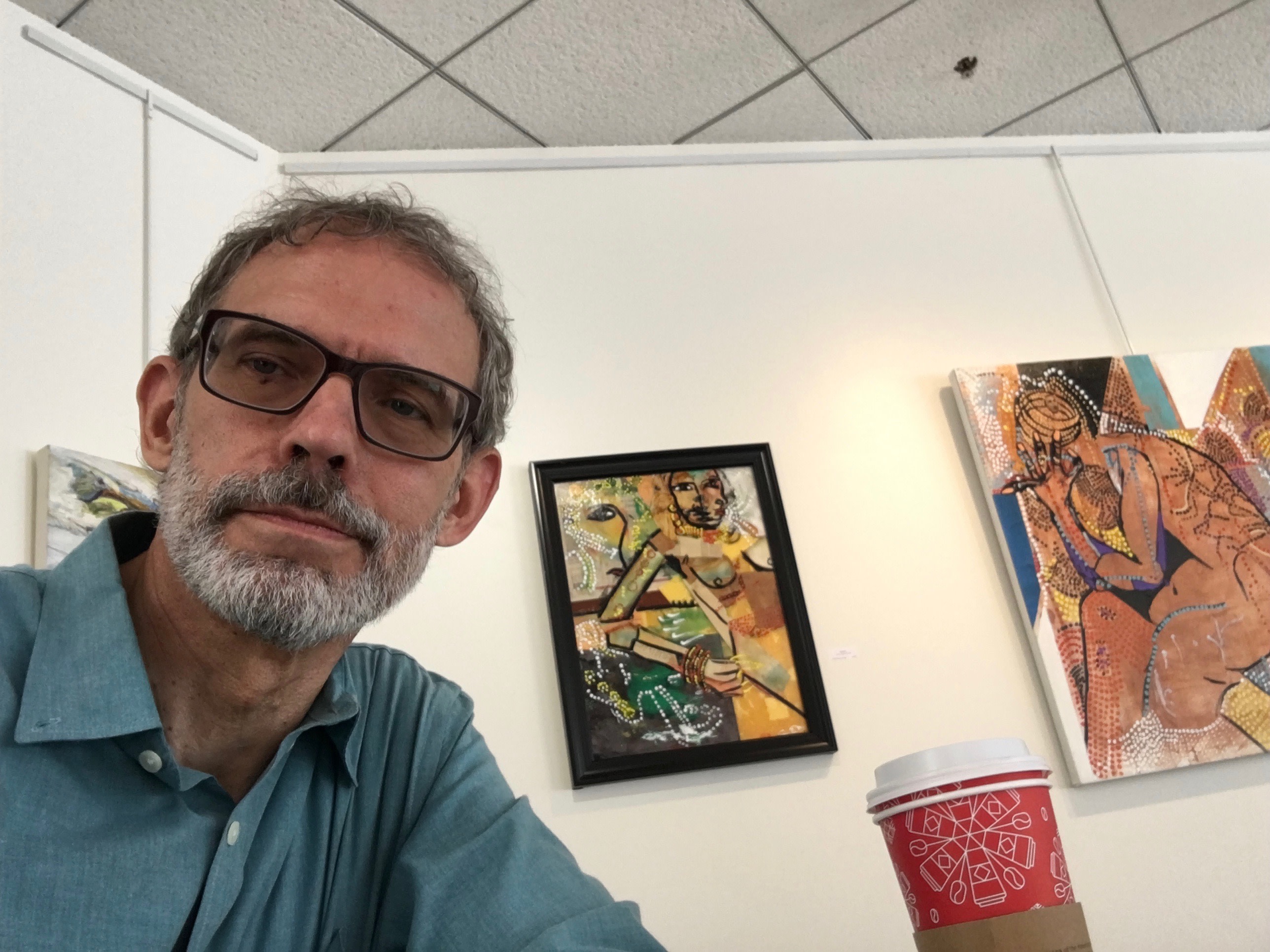
Scott Sedar
Washington, DC
Scott Sedar lives and paints in Washington, DC. He works in oil on linen, tempera, and watercolor on paper.
Message
Scott began to show his work at the age of 10 years. His first solo art exhibit took place in 1975 at Denver’s Gaslight Theatre. Subsequent art credits include solo and group-artist exhibits in Washington, DC; a cover painting for the Washington Post Style magazine; commissioned works and an artist’s residency at Johns Hopkins University’s Evergreen House, Baltimore.
Statement
After surgery, six weeks of bed rest! As a teenager, I heard this prescription as a kind of extended punishment. Already, my young life had had several major physical setbacks and this latest six-week detention felt particularly tough for me. My parents thought I would need something to pass the time at home, so my father gave me a set of oil paints. I remember the distinctive linseed oil odor as I opened the tubs. The colors of the pigment sparked a creative impulse, and oil paint became my indispensable companion during that month-and-a-half. Then, for six-decades, oil-based has been my primary medium. Here’s my artist’s statement answered through four questions.
Why do I work as an artist?
In the simplest terms, I pursue art because it calls upon my strengths. I’m hard wired for several of the traits found in artistic personalities:
· I’m hungry for life
· I want to understand my experience, as well as my doubts, and
· I need to communicate directly, as in “a picture speaks louder than words.”
How did I find this out?
It has taken many years to understand myself and the origins of my creative side. I’ve traced my predisposition to an early experience, one that involved a desperate search for direct contact with others.
Desperate. It’s the right word to describe the feelings of an infant in a respirator in an isolation ward at Children’s Hospital in Denver. There are only fragments of this time in my memory, but I know I was separated from my mother. The polio virus, often referred to as infantile paralysis, was considered highly contagious, necessitating my isolation. Worse for me, it was shutting down the nerves in my brain stem, the ones I needed to breathe. That’s a scary place. A one-year-old baby has awareness, memory and interaction with their environment, but no language. I couldn’t say I was desperate, but that doesn’t mean I didn’t feel it. I couldn’t make my wishes known to those brave nurses who took the place of my mother.
So, what do I set out to explore with my art materials?
Years later in my career, I would use oil paint to revisit my hospital confinements and the desperation I shared with my parents and caregivers. In the beginning, of course, my materials and images were simpler; a crayon portrait of my father: his horn rim glasses, flat top haircut and favorite pipe. Crayons gave way to tempera paint which allowed me to discover the shape of ducks and insects. Some of these early tempera works won a place in a window display at a downtown department store in Denver. Eventually, oils on linen afforded me the means to explore a variety of subjects: still life objects, landscapes, figures, portraits and an even more ethereal world of dreams and emotions.
What did I discover along the way?
Art has been critically important for me, trying to become myself. Painting has given me the opportunity to try my patience; to challenge myself with new materials and to open my eyes to each new subject, whether a teacup or a trellis. Also, as I’ve noted, art has brought to life a fragment of my past, painful but pivotal to my development as a person, and an artist. A lifetime of painting can yield a treasure trove, as well as the wondrous gift of becoming oneself.
Powered by Artwork Archive